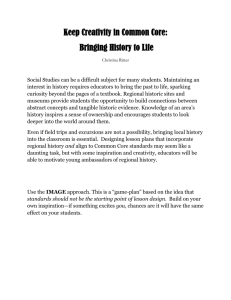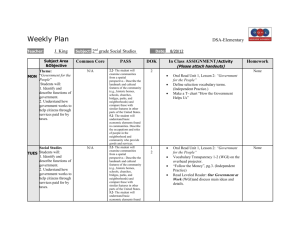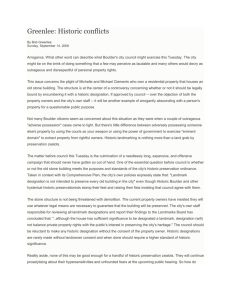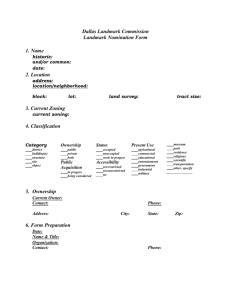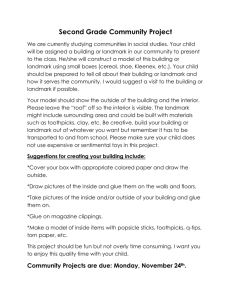The WPA Guide to New York City, (New York: Pantheon Books, 1982)
advertisement
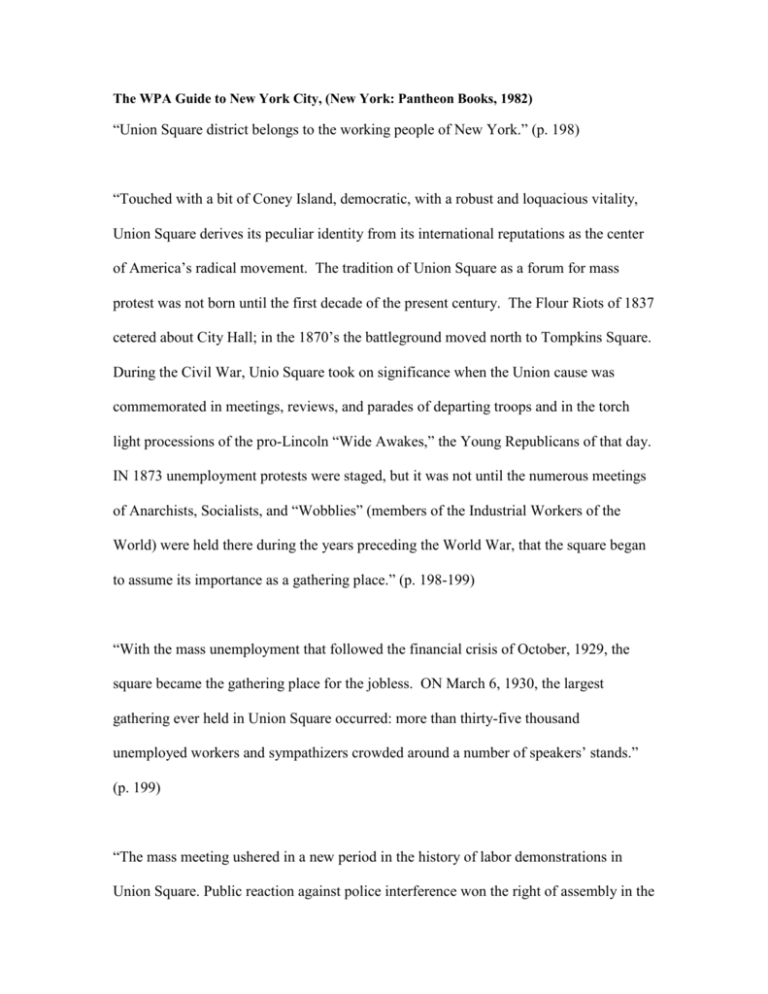
The WPA Guide to New York City, (New York: Pantheon Books, 1982) “Union Square district belongs to the working people of New York.” (p. 198) “Touched with a bit of Coney Island, democratic, with a robust and loquacious vitality, Union Square derives its peculiar identity from its international reputations as the center of America’s radical movement. The tradition of Union Square as a forum for mass protest was not born until the first decade of the present century. The Flour Riots of 1837 cetered about City Hall; in the 1870’s the battleground moved north to Tompkins Square. During the Civil War, Unio Square took on significance when the Union cause was commemorated in meetings, reviews, and parades of departing troops and in the torch light processions of the pro-Lincoln “Wide Awakes,” the Young Republicans of that day. IN 1873 unemployment protests were staged, but it was not until the numerous meetings of Anarchists, Socialists, and “Wobblies” (members of the Industrial Workers of the World) were held there during the years preceding the World War, that the square began to assume its importance as a gathering place.” (p. 198-199) “With the mass unemployment that followed the financial crisis of October, 1929, the square became the gathering place for the jobless. ON March 6, 1930, the largest gathering ever held in Union Square occurred: more than thirty-five thousand unemployed workers and sympathizers crowded around a number of speakers’ stands.” (p. 199) “The mass meeting ushered in a new period in the history of labor demonstrations in Union Square. Public reaction against police interference won the right of assembly in the park. It became accepted in New York City that the May Day Parade was privileged to be reviewed at the north end of the square.” (p. 199) “Recent years have seen the development of many protest centers throughout the city, diminishing the former concentration of such activities in Union Square. The soapbox speaker’s old stamping grounds, the traffic triangles at the corners of the square, are now islands of verdure. Nonetheless, Union Square is likely to continue as the heart of the city’s radical activities, for in its neighborhood are headquarters of many of New York’s radical and progressive groups and labor organizations.” (p. 200) “At the north end a colonnaded bandstand was constructed, overlooking a large plaza where automobiles are parked unless a mass meeting is scheduled.” (p. 202) Minutes from National Park System Advisory Board Landmarks Committee Meeting, Thursday, November 5, 1997, Room 7000B, Main Interior Building, 1849 C Street, NW, Washington, DC. When they discussed Union Square Dr. Richard Guy Wilson from the University of Virginia asked why the Liberty Pole and the War Memorial had not been counted as contributing to the landmark designation. “Ms. Bernhardt explained these resources postdated the period of significance. Dr. Wilson noted the limitations of the nomination process, commenting that thought the non-contributing structures were important to national history, they could not be counted as contributing because the property was only being nominated under the labor organization and protest theme. Mr. (Jerry) Rogers, (Superintendent of NPS) noted that contributing elements of the property are the ones that have associative value in terms of the nationally significant event that took place here. However, it would be foolish not to recognize that other elements not directly associated with this event may be historically important for reasons that do not relate to the property’s national significance.” Dr. Holly Robinson, CoChair of the Committee. They discussed other important events in the Square including Lincoln’s speech and the 1930 demonstration. Dr. Butowsky suggested that the nomination can be supplemented later and that the more areas of significance included the more complicated it will be to be approved. “Ms. Bernhardt noted the designation of Union Square may give opportunity for interpretation of other events beyond the labor associated events that occurred here. Ms. (Carol) Shull (Chief of the National Historic Landmarks Survey and Keeper, National Register of Historic Places) acknowledged the limitation of making the area of significance the only recognized value. She expressed her hope to include opportunity for comment on values other than those that make a property nationally significant in future guidelines for preparing NHL nominations.” However it is difficult for researchers to document areas of significance outside the theme study they are concerned with. Mr. (Robie) Lange said that the issue goes beyond what is just in the theme study. “non-contributing resources do not receive the same protection under Section 106 as those listed as contributing.” “Dr. Robinson asked for the standard motion to recommend Union Square for NHL designation under NHL Criterion 1. Mr. Dangermond so moved. Mr. Westbrook seconded. Dr. Robinson called the vote. The vote carried unanimously.” Press Release from the City of New York: “Mayor Giuliani Dedicates Union Square Park as a National Historic Landmark” FOR IMMEDIATE RELEASE Date: Saturday, September 12, 1998 Release #426-98 Contact: Colleen Roche/Jennifer Chait (212) 788-2958 Edward Skyler (Parks) (212) 360-1311 MAYOR GIULIANI DEDICATES UNION SQUARE PARK AS A NATIONAL HISTORIC LANDMARK Mayor Rudolph W. Giuliani today took part in the dedication of Union Square Park as a National Historic Landmark. The Mayor was joined by Governor George E. Pataki, Senator Daniel P. Moynihan, Senator Alfonse M. D'Amato, New York Central Labor Council President Brian M. McLaughlin and Parks Commissioner Henry J. Stern. The selection of one of New York City's finest parks was made by the National Parks Service last November in recognition of the park's role as a focal point in American labor history. The Park was the site of the first Labor Day Parade on September 5, 1882. "I am proud to be here today at the dedication of the unique Union Square Park as a National Historic Landmark," Mayor Giuliani said. "As one of the jewels in City's parks system, Union Square Park has always been a center of tremendous activity, providing in the nineteenth and twentieth centuries a stage where entertainment and later workers' rallies, political protests and mass demonstrations took place. It was in Union Square Park on September 5, 1882 that over 30,000 union members came together in a show of unity, strength and commitment to equality and fairness in celebration of the nation's first Labor Day Parade. "Over the years, workers from all over the world have come to New York City, turning our economy into one of the most dynamic and successful in the nation and the world," the Mayor continued. "They have supported themselves and their families and have been responsible for creating the highways, monuments, skyscrapers -- and our parks -- that have come to define the unique landscape of our City. And there has never been a better time, or a more fitting place, to celebrate the importance of workers and their contributions than right here in Union Square Park in New York City. We can all be proud that this special park is now recognized as a National Historic Landmark." Governor Pataki said, "It is only fitting that the National Parks Service should recognize Union Square Park's long history as a focal point for political expression. New York is proud that the first Labor Day parade took place here in Union Square Park more than a hundred years ago, establishing a tradition that spread across the nation. Working together with the City, the State is also investing $400,000 to ensure that future generations can continue to enjoy the Park." Parks Commissioner Henry J. Stern said, "What a perfect time to dedicate Union Square Park as a National Historic Landmark as we enjoy its renaissance and prepare for its halfacre expansion. Thanks to funding from the Mayor's capital budget, the park will grow to the south and at its corners, creating a beautiful plaza where the Gandhi Gardens provide a home for their inspirational leader." Union Square Park became a National Historic Landmark after the New York State Department of Parks, Recreation and Historic Preservation endorsed its application to the National Park Service, part of the U.S. Department of Interior. The Park's landmark status was officially approved in November, 1997. Originally known as Union Place, the area was named in 1815 for the juncture of Boston Post Road (later Bowery and then 4th Avenue) and Albany Post Road (later Bloomingdale and then Broadway). In 1832, a fenced-in oval park was constructed at its center and it was named Union Square. While the park was at the heart of the entertainment district in the 1870's, Frederic Law Olmsted and Calvert Vaux, architects of Central Park, redesigned the Square, by removing the fence and installing a large fountain at its center. The construction of the Brooklyn-Manhattan Transit (BMT) subway in the 1930's caused another transformation, placing the park four feet above street level and adding a perimeter wall. By that time, the square had become a popular site for workers' rallies, political protests and mass demonstrations. The 1960's and 70's was a bleak period in the Square's history, as the Park became overridden with drug dealers and other criminal activity. In 1985, a $3.6 million reconstruction project addressed the park's safety problems and made it more appealing to park goers. The project built a new plaza at the south end of the Park, opened up the Park's center lawn, established clear sight lines, relocated pedestrian paths, and restored the Lincoln and Washington statues. This restoration corresponded with the renaissance of the Union Square area. Beginning in Spring, 1999 the Park will undergo another remarkable transformation in its southern end. This project will extend the southern boundary of Union Square Park 20 feet so that it is even with the northern curbline of 14th Street. The boundary will become straight instead of elliptical, creating a more accessible pedestrian thoroughfare. The expansion will also capture the Gandhi Gardens, a monument and floral bed at the southwestern corner of the park, creating a plaza in the area between the park and the gardens which has been used for parking. The new parkland will extend to 15th Street, and enlarge the Park by 20,000 square feet. The project is funded by $2.2 million from the Mayor's capital budget and $400,000 from the MTA.


